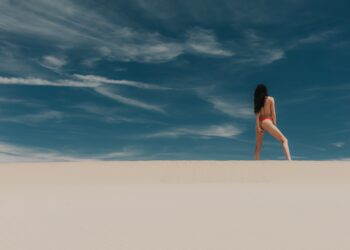Triceratops – Introduction, Anatomy and Extinction
Triceratops is one of the most instantly recognizable dinosaurs, renowned for its immense size, impressive body armour and three horns protruding out of its face. Even though they have been extinct for millions of years, they still remain a popular source of fascination and intrigue. In this article we will take a comprehensive look at triceratops – what they were like, the physiology, their extinction and various associated questions.
What is a Triceratops?
Triceratops, meaning “three-horned face” is a large, herbivorous dinosaur that lived during the Cretaceous period (68-66 million years ago). They were one of the last non-avian dinosaurs to exist on earth and remain the most iconic species of all ceratopsians, which were a group of related dinosaurs known for the large neck frills and horns on their faces. They were large, quadrupedal animals with three horns, one over each eye, and a longer one on their noses. Their heads were also adorned with bony protrusions in the form of a projecting frill, which grew as the animal aged. They are also known for their long and powerful tail, which was thought to be used for defence in the presence of danger.
Anatomy
Triceratops were large animals, measuring about 30 feet in length and weighing up to 13 tons. Their bodies were built for strength and endurance, their front legs being thick and stout, while their back legs were thinner and built for speed. They had a wide body shape to accommodate their large stomachs, which allowed them to consume large amounts of vegetation, as well as five-toed feet with hooves for durability.
Triceratops also possessed a hard, bony, protective headgear on their skull, which was mostly composed of their three horns, frill and jaw. The horns were primarily composed of keratin, and could have been used in territorial skirmishes, courtship or as a tool to defend their territories or confront predators. Statistical analysis of the horns, frill and skull shape has revealed that Triceratops came in two distinct varieties— one being long-skulled and the other being short-skulled.
Their powerful tails had at least eighteen vertebrae, which were tightly packed together and included three or four fused vertebrae near the tip. This gave the animal tremendous strength and maneuverability, allowing them to swat away predators with ease.
Extinction
Triceratops were wiped from the planet along with all of the other non-avian dinosaurs at the end of the Cretaceous period by a catastrophic event, the most widely accepted theory being an asteroid impact. Evidence suggests that the impact killed off most of the plant-eating dinosaurs, leaving the carnivores with an abundance of food that eventually led to their extinction as well.
FAQs
Q1. How long did Triceratops live?
A1. Triceratops lived from 68-66 million years ago during the Cretaceous period until they went extinct.
Q2. What did Triceratops eat?
A2. Triceratops were herbivorous creatures, and mainly subsisted on plants such as horsetails, ferns, conifers and cycad.
Q3. What killed off Triceratops?
A3. Most scientists believe that the asteroid impact at the end of the Cretaceous period was responsible for the extinction of Triceratops and many other dinosaurs.
Related examples
Triceratops are the most iconic members of the family of ceratopsian dinosaurs that also included Pachyrhinosaurus, Styracosaurus and Centrosaurus.
Another iconic example of a large quadrupedal dinosaur is the famous Tyrannosaurus Rex. It was also one of the last non-avian dinosaurs to existed, but it was a carnivore, living in the late Cretaceous period and preying on species such as Triceratops, Ankylosaurus and Trachodon.
Conclusion
Triceratops have captured the imagination of generations, becoming one of the most beloved dinosaurs known to science. They were large, armoured animals with three horns and a frill on their faces, used for defence and doing battle with rivals. Although they are extinct, their fascinating anatomy and physiology continue to be studied and admired by palaeontologists, giving us an insight into our prehistoric past.












